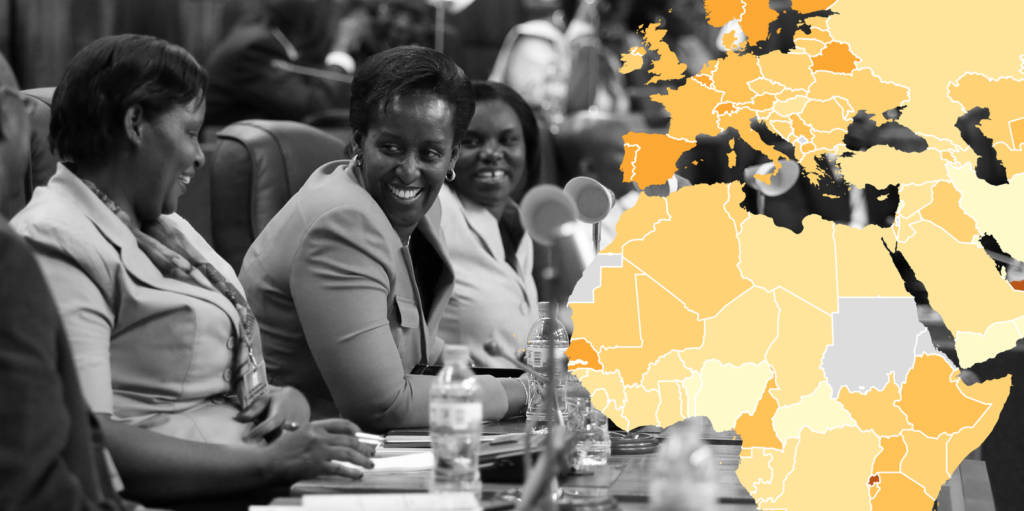Election madness 2024 — one year in the Data Vis Dispatch
January 9th, 2025
3 min
Datawrapper lets you show your data as beautiful charts, maps or tables with a few clicks. Find out more about all the available visualization types.
Our mission is to help everyone communicate with data - from newsrooms to global enterprises, non-profits or public service.
We want to enable everyone to create beautiful charts, maps, and tables. New to data visualization? Or do you have specific questions about us? You'll find all the answers here.
Data vis best practices, news, and examples
250+ articles that explain how to use Datawrapper
Answers to common questions
An exchange place for Datawrapper visualizations
Attend and watch how to use Datawrapper best
Learn about available positions on our team
Our latest small and big improvements
Build your integration with Datawrapper's API
Get in touch with us – we're happy to help
This article is brought to you by Datawrapper, a data visualization tool for creating charts, maps, and tables. Learn more.

Hello, this is Daniela. At Datawrapper, I take care of all organizational, financial, and personnel issues. After the election of Kamala Harris as the first female Vice President of the USA, I started thinking about how female politics worldwide actually is. I will take a closer look at this in today’s Weekly Chart.
Everyone – man or woman – has the right to take part in the government of his country, directly or through freely chosen representatives, and everyone has the right of equal access to public service in his country.
Equal rights for men and women are nowadays anchored in many constitutions. And women have long been allowed to vote (almost) everywhere in the world. However, women as heads of state are still rare. Dr. Angela Merkel, German Chancellor for 15 years, or New Zealand’s Prime Minister Jacinda Ardern are exceptions.
When it comes to women participating in political decision-making processes, there are still major deficits worldwide. We can see this when mapping the share of women in national parliaments.
Most parliaments are still heavily male-dominated. According to numbers from the International-Parliamentary Union (IPU) – that are also used by the World Bank – women hold only one-fifth of parliamentary seats in the world’s national assemblies in 2020. Some have no women MPs (members of parliament) at all.
But there are positive examples as well. In three countries of the world, women make up the majority of representatives: in Rwanda (61%), Cuba (53%), and Bolivia (53%). The United Arab Emirates comes in 4th place with an equal gender distribution (50%).
And the share of women in parliaments has increased over the years in many countries. There are more women in the world’s parliaments today than 25 years ago:
Nevertheless, there still seems to be a long way to go on the road to gender equality: Only 28% of parliaments have at least 30% female members.
I was surprised that Rwanda is at the top of the ranking. So I took a closer look at what works differently there than in other countries.
After the 1994 genocide in Rwanda and the death of many, especially educated men, women stepped out of their traditional roles and took on typical “men’s tasks”. Female participation in the parliament rose quickly in the coming years. A new constitution in 2003 included a 30% women quota. Inside Rwanda’s government, there is now a Ministry of Gender and Family Promotion, a gender monitory office, and a commitment to gender-based budgeting that ensures the promotion of gender equality.
The increased number of female politicians improved their self-confidence. “At first, you felt you were an intruder,” MP Juliana Kantengwa told a researcher in 2006. But with more women joining, “the feeling has gone. You feel at home.”
Women MP like Kantengwa have initiated essential processes, like better access for women to education and the health system, support for women in the economy, and the introduction of new laws against rape and other gender-based violence.
But patriarchal structures still prevail in the population. Equality is written into the law, but as this 2019 The National Geographic article makes clear, men have a hard time accepting it in their daily lives: “A Rwandan woman’s power, no matter how vast in public, still stops at her front door,” the author Rania Abouzeid states.
It’s a long way until political changes also change minds. But we’re going in the right direction. Like Kamala Harris said in her first speech as vice-president elect of the United States: “While I may be the first woman in this office, I won’t be the last.”
Thanks for reading! If you have feedback, let me know in the comments below. And as always, you can jump directly into the Datawrapper app to learn how the visualizations in this article are made: Hover over them and then click “Edit this chart” in the top right. We’ll see you next week!
Comments